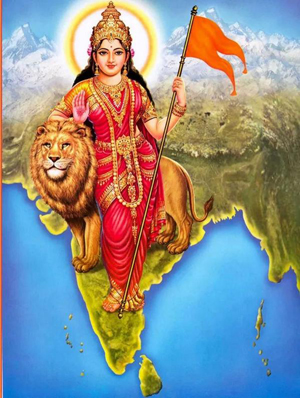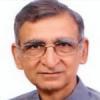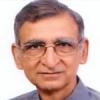Today in India the gulf between religious communities is widening at a rapid pace. The ‘Hate other ideologies’ abound and are percolating down to the social levels at dangerous pace. As such India is a plural, multi-religious society, where diverse people have been living together for centuries. The Ganga Jamuna Tehjeeb, the mixed culture present in our society gets manifested in its food habits, dressing pattern, celebrations, festivals and religious traditions. These show how over a period of centuries the people of different communities have been adopting to each other in the spirit of ‘Vasudhaiv Kutumbakan’ (Whole World is my family) and ‘Love thy Neighbor’. While ethnic strife was there; the violence in the name of religions, Hindu-Muslim-Christian was conspicuous by its absence. The sectarian strife: Shaiv-Vaishnav, Shia-Sunni was there but the social scenario was by and large marked by amity. The highest points of these interactions can be seen in the traditions like Bhakti, Sufi and even the coming into fore of a new religion Sikhism and a new language: Urdu.
The problem begins with the British colonial period when the rulers adopt the policy of ‘divide and rule’ and in pursuing that policy they introduce communal historiography where the focus of history becomes Kings’ religion and selective picking up of points related to temple destructions, forcible conversion, taxation policies and atrocities on women, become the ground for spreading hatred. This hatred is the foundation on which violence is based. India comes to become a nation through its struggle against colonial powers and during the formation of this nation large sections of population are included in the newly forming India on the grounds of Liberty, Equality Fraternity. The Indian nationalist streams reject the British presentation of communal historiography and base their understanding on National historiography, one of the manifestations of which comes in Gandhi’s Hind Swaraj, where he talks of inclusive character of different rulers of the past, cutting across the religious boundaries.
In contrast to Gandhi-Indian nationalists, the communalists take up the divisive communal history and adopt it to suit their narrow goals of Muslim Nation or Hindu nation. The Muslim League presents the case as if India (rather sub continent) was being ruled by Muslims so British should hand over power to Muslims. Hindu Mahasabha-RSS presented the ideology of this land being a Hindu Nation from times immemorial. Here the pattern of production, hunter society, nomadic society, agricultural society with kingdoms and the then society with changes of Industrialization are glossed over and a lineage of present Hindu society with hunter-nomadic communities is presented to claim the ruler ship, as being the original inhabitants of the land. Hindu kings-Hindu society is presented as an ideal, trouble free society which gets problems due to Muslim invasion, so need to bring back Hindu nation becomes the agenda of Hindu Mahasabha-RSS.
These communal streams, the one’s vouching for Muslim nation or Hindu nation, had no interest in the problems of ‘people’, the dalits, adivasis, women or workers. Their focus was the interests of lineages of earlier rulers, the landlords, Kings in whose times the birth based hierarchies, operating at political, social and gender level were the basic hallmarks of society. They began a double ideological battle. On one hand to demonize the kings of ‘other’ religion-glorify the rulers of their own religion and two to present the birth based hierarchies in a glorified manner.
Their social reach was limited but they started spreading their version of History and promoting the hatred for other community. This was at a time when National movement was uniting the people cutting across the boundaries o religion, caste, region and gender. The communalists took up emotive issues, music before the mosque, pig-cow in their sacred place, creating nuisance when others have religious festivals and so on. The hatred forms the basis of violence and consequently polarization in the society. While we have seen the intensification of this polarization during last few decades, we have also seen a gradual rise in the intensity of hatred against some and insecurity among those who are being made the object of hate around many issues. Be it cow slaughter, temple destructions, forcible conversion, ‘our women’ being subjected to atrocity, global terror and what have you. Now a new emotive issue has been thrown up very recently, its fresh from the Bakery, so can serve a good example of understanding the anatomy of construction of object ‘Hate’ , demonization of the ‘other’.
RSS Sarsanghchalak, Mohan Bhagawat (March 2016) gives a statement on his own that ‘the time has come to ask the new generation to chant ‘Bharat mata ki Jai’ ‘ (BMKJ). This acts like letting loose the cat among the pigeons. For being ‘politically correct’, he later says that nobody should be forced to chant this slogan. As if on a cue, while it was not necessary to respond to this unwarranted, communal intervention by Bhagwat, Asaduddin Owaisi supplements the game by saying that he will not chant this slogan even if a knife is put on his throat. At the same time he says that he has no problem in saying Jai Hind. In the talk shows which follow the RSS-BJP spokespersons deliberately begin the story with Owaisi, forgetting the statement by Bhagawat. In a holier than thou spirit Javed Akhatar chants the same slogan thrice to win the kudus from the sectarian and many other elements.
To take the story further, and this shows how such emotive issues are constructed, Congress-NCP, trying to play the role of B team of Hindutva, against the prevalent laws of the land, asks for suspension of Waris Pathan (Owaisi party) who refuses to chant the slogan; from Maharashtra Assembly. Communal politics of RSS combine has a good back up in these so called secular parties like Congress-NCP so to say. Then steps in Devendra Fadanvis, Maharashtra Chief Minster, one brought up on the ideology of Hindu nationalism: RSS. This gentleman has been brought up more on ‘Bunch of thoughts’ of Golwalkar rather than the values of Indian Constitution. He does not want to know about the values of Indian Constitution despite being a Chief Minster. Taking further his mentor Bhagwat’s statement he asserts that those who do not chant this slogan (BMKJ) have no right to live in India! So India of 125 Crore has now has an ideology and its soldiers are out to maul the Indian Constitution. To take the matters to the streets and community comes in RSS fellow traveler, Baba Ramdev. He picks up from Owaisi and blurts, ‘If no law would have cut the heads of those who don’t say Bharat Mata Ki Jia’
While many of these worthies now will be trying and explaining their outpourings towards and acceptable language, the damage has been done. The communal force is now equipped with one more weapon to consolidate its social and electoral base. My earlier article on the topic explains as to how BMKJ can be a voluntary for those who want to chant it and it is equally OK if someone does not chant it. With Ramdev’s statement one more emotive issue has been constructed ‘successfully’. Celebrations may be on among those who want to distract the attention from the problems of Bharat Mata of Jawaharlal Nehru (125 crore people of India), the problems of dalit students (Rohith Vemula) the problems of University autonomy, (Kanhaiya Kumar), the problems of farmers suicide, the rising prices, lack of employment generation and what have you.
It’s time that the India wakes up to realize the game of communal forces and vow not to fall prey to their machinations around such slogans or other emotive issues which are manufactured by them on regular basis and are pulling us back on the scale of Indian nationalism.








Comments
U can see only his creation not creator
WORSHIP THE CREATOR NOT HIS CREATION
Add new comment